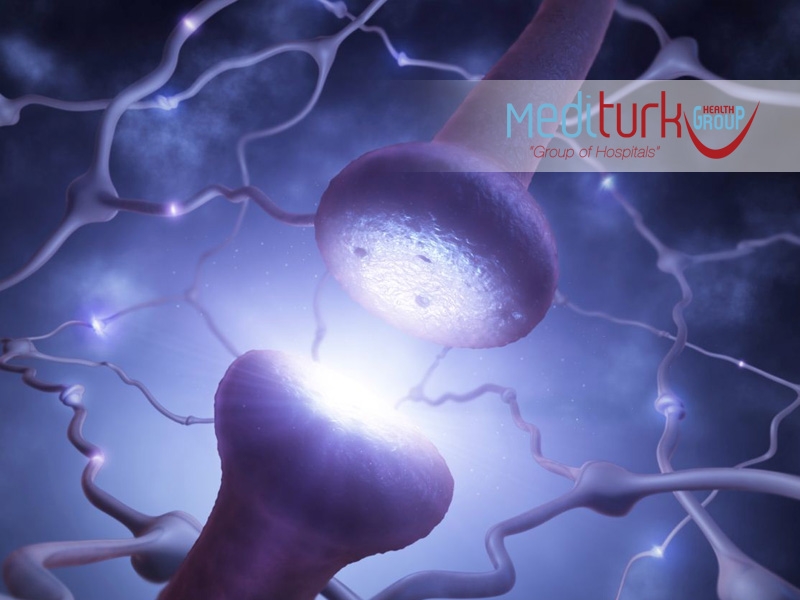- Executive Healthcheck
- ENT
- Chronic Diseases
- Alternative Medicine
- Cosmetic/Plastic Surgery
- Dentistry
- Detox
- Addiction Treatment
- Anti Aging
- Ayurveda
- Cancer Treatment
- Eye/Lasik Care
- Fertility Treatment
- Gynecology Treatment
- Hair Transplantation
- Heart Care/Surgery
- Infertility / IVF
- Laparoscopic Surgery
- Laser Surgery
- Medical Spa Treatment
- Neurology
- Obesity/Bariatric Surgery
- Organ Transplant
- Orthopedic/Knee Surgery
- Pediatric Treatment
- Rehabilitation
- Robotic Surgery
- Skin Care
- Spine Care/Surgery
- Sports Medicine
- Stem Cell Therapy
- Urology
- Vascular Surgery
- Yoga/Meditation
Neurology

Overview
Neurology is the study of the nervous system, and involves the central and peripheral nervous system, and the diagnosis and treatment of a number of neurological or nerve disease processes and injuries.
The nervous system is generally divided into three categories; the central nervous system, peripheral nervous system and autonomic nervous system. The central nervous system is the communication highway between the brain and the rest of the body.
Any type of disruption or injury to the brain or spinal column has the potential to cause permanent damage to body function in muscle function, reasoning, cognitive levels and speaking, eating, seeing or hearing.
Central and Peripheral Nervous System
The central nervous system consists of the brain and spinal cord, while the peripheral nervous system involves the nerves found in the body. The peripheral nervous system consists of 12 pairs of cranial nerves that extend from the brain, and 31 pairs of spinal nerves that spread from the spinal cord to other parts of the body.
Common Disorders of the Central Nervous System:
Encephalitis - inflammation of the brain
Epilepsy - a brain seizure disorder
Cerebral Palsy - disruption involuntary muscle action caused by brain damage, most commonly received during the birth process
Poliomyelitis - a nerve pathway disease that causes paralysis
Parkinson's disease
Multiple Sclerosis
Alzheimer's disease
ALS (Amyotrophic Lateral Sclerosis or Lou Gehrig's Disease)
Myasthenia Gravis
Traumatic brain injury
Headaches and Migraines
The peripheral nervous system is what makes our body move and is divided into two categories; the somatic and autonomic nervous systems. The peripheral nervous system links nerves traveling from the spine to the skeletal muscle fibers in the body.
Common Disorders of the Peripheral Nervous System:
Sciatica
Neurologia
Bell's palsy
Shingles
Common Neurological Diagnostic Procedures
Neurological diagnostic tests and procedures are designed to locate and diagnose nervous system issues and disorders. Some of the most common screening tests include:
Neurological examinations - these help determine function and status of speech, balance, coordination, reflexes, mental status as well as tumors or infections such as meningitis or encephalitis.
Fluoroscopy -a type of x-ray th that utilizes pulsed low dose radiation beams to create continuous images of body parts. Pictures can be sent to a monitor for immediate viewing or videotaped. In some cases, contrast mediums or dyes may be used to provide specific focus to certain areas of the body.
Cerebral angiogram - often utilized to diagnose and pinpoint narrowing or obstruction of arteries or blood vessels in the brain or neck. They may also be used to determine size and location of brain aneurysms, tumors or vascular malformations.
Brain scans - include but are not limited to MRIs (magnetic resonance imaging), computed tomography (CT) and positron emission tomography (PET). Brain scans can diagnose location of brain hemorrhages, malformations in blood vessels, and be used to locate and diagnose tumor growth.
Electroencephalography - also known as an EEG, this test monitors brain activity. It's often used to diagnose brain damage caused by head injuries, seizure disorders, or inflammation in the spinal cord or brain caused by degenerative disorders, metabolic disorders and some psychiatric disorders.
Electromyography - also known as EMG, this test is utilized to diagnose muscle dysfunction, spinal cord disease processes and diagnose nerve damage or dysfunction. The test measures and records electrical activity from the spinal cord or brain to peripheral nerve roots located in the legs or arms.
These are just a few of the many tests available to neurologists for the identification and diagnosis of dozens of brain and central nervous system disorders.
Benefits of Neurological Testing
Any individual experiencing brain or spinal cord issues and conditions will benefit from neurological diagnostic testing procedures in order to diagnose and find appropriate treatment for a variety of central nervous conditions. In most cases, testing for neurological disorders is taken through a non-invasive approach or minimally invasive approach to determine proper treatment pathways.
Finding a Neurosurgeon to Meet Your Needs
A neurosurgeon must complete and graduate from medical school and then perform internship before entering a neurological residency, which takes between 5 to 7 years to complete. Following that, a neurosurgeon must complete between 1 and 2 years of fellowship in a brain surgery specialty such as brain tumors or cerebrovascular disorders

